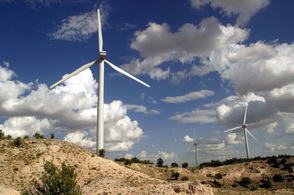|
-- Os Schmitz, Professor Something I find very disconcerting these days is the increasing number of media reports about conflicts over renewable energy siting and biodiversity conservation. They make great stories because they typically portray them as David and Goliath-type encounters in which the interests of a small local conservation group or land trust that is trying to protect its favored species or place is set against a corporate giant—the renewable energy industry—whose putative sole interest is the generation of wealth. Oftentimes, these interactions end up in drawn-out court battles. But, what is neglected in these stories is that renewable energy sources like wind, solar and bioenergy are intended to increase the efficiency of energy use as well as help stem the rise in anthropogenic atmospheric CO2 emissions that are contributing to global warming. So, by becoming embroiled in conflict, conservation groups prevent climate action at the very time when action is urgently needed. It also prolongs the use of fossil-fuel energy with associated releases of CO2 to the atmosphere. So, when conservation groups take actions to prevent the siting of these sources of energy generation to prevent species or habitats of concern from being destroyed, they unwittingly, and ironically, end up increasing the long-term risk of destroying those species or habitats. This is not to say that there is no longer a place in ecology and conservation to understand and protect species and ecosystems from human land development. But doing that in a climate future requires that conservation changes how it goes about its business. It is becoming less and less tenable simply to try and protect species using just traditional approaches like parks and protected areas. Species are expected to move out of these areas as they adjust to changing climate. So, a more dynamic view of landscapes is called for in conservation, one that develops and implements conservation approaches that will enable species and the ecosystems they comprise to persist across landscapes both within and outside protected areas. Not considering dynamic landscapes and merely doing business as usual using traditional protected areas strategies risks painting the favored species into a proverbial landscape-corner. Science has much to offer as help. There are myriad spatially explicit landscape-scale approaches that can help land use planning for compatible uses. These include using existing conservation tools, like parks and protected areas, as a foundation. But they also include reconnecting those places to create wide-open spaces so that ecosystems may continue to function and provide services for human welfare. They also require imagining a climate future by creating, through the use of models, maps depicting scenarios about where species and the ecosystems they comprise are likely to end up. Our lab has been part of an effort to synthesize the different approaches and offer a flexible portfolio of options, with associated guidance on what different approaches entail and what information needs must be met in order to use them in land use planning for conservation (see http://yale.databasin.org). But ultimately, I believe that adapting landscapes for a climate future requires a new way of conducting conservation, one that avoids taking completely adversarial stances against any human land development to one that forges partnerships with myriad stakeholders across the landscape to encourage thoughtful, science-based land use planning for compatible uses.
In such partnerships, conservation values can become broader land-use planning values for renewable energy siting.
76 Comments
|
Archives
November 2019
Categories
All
|


 RSS Feed
RSS Feed
